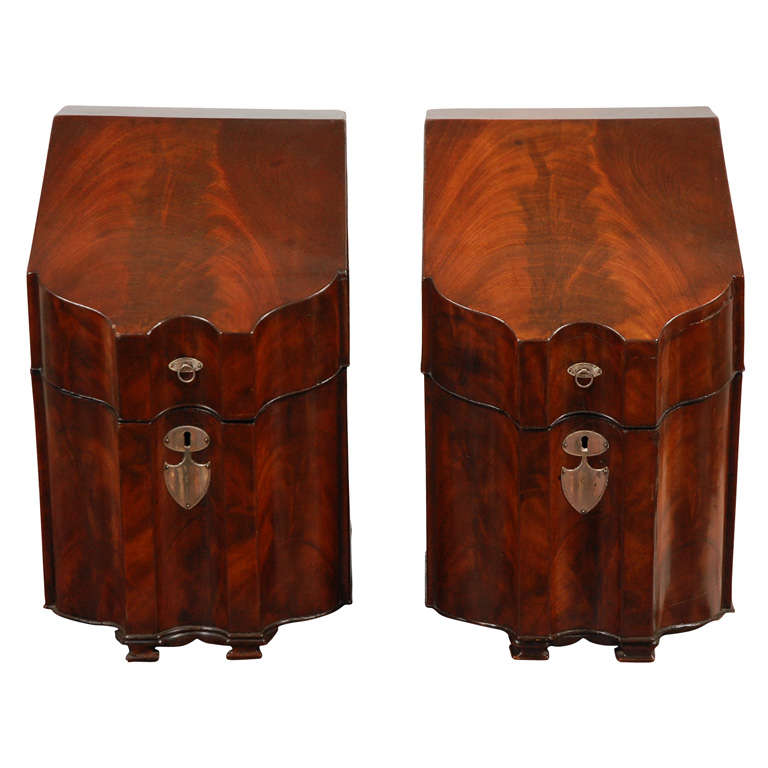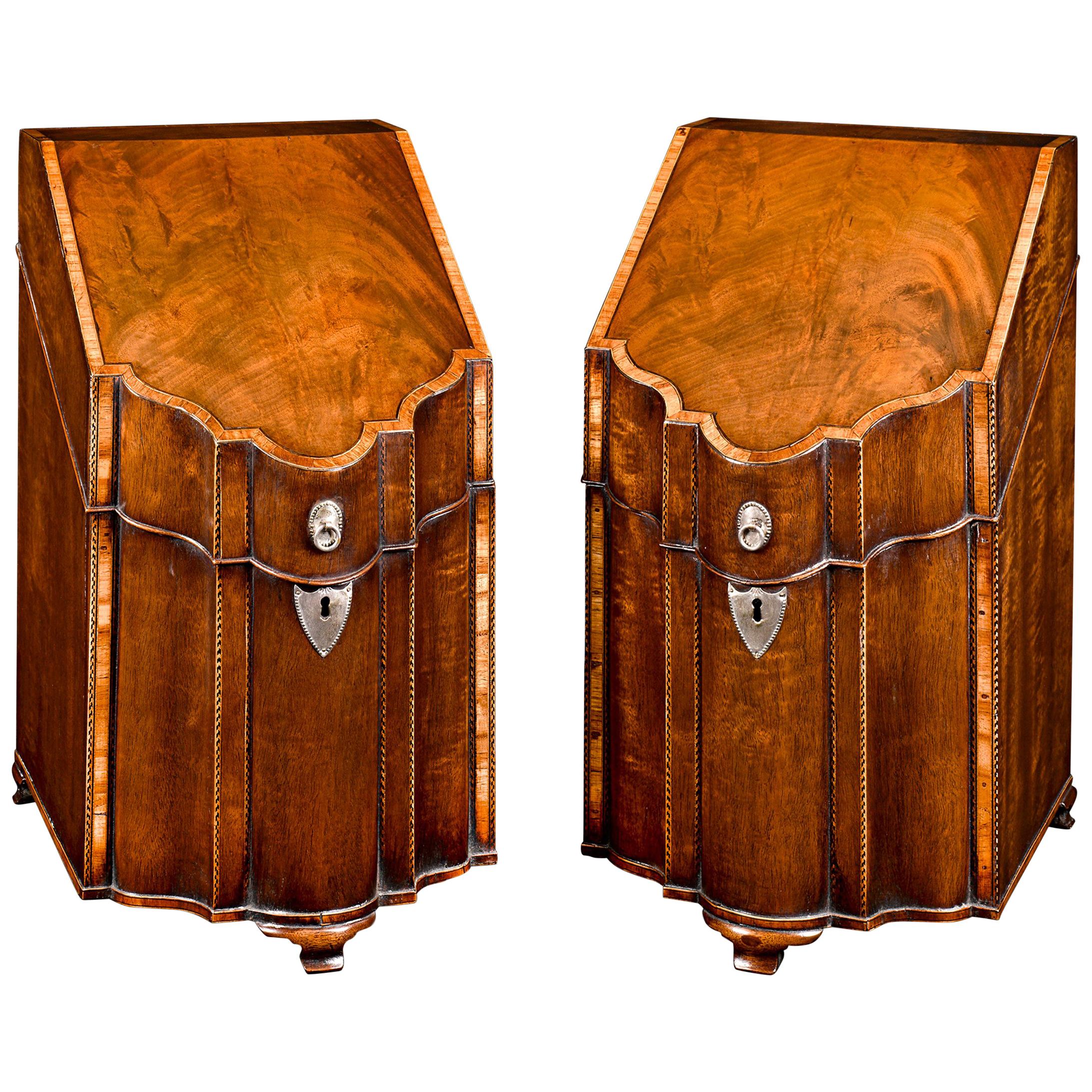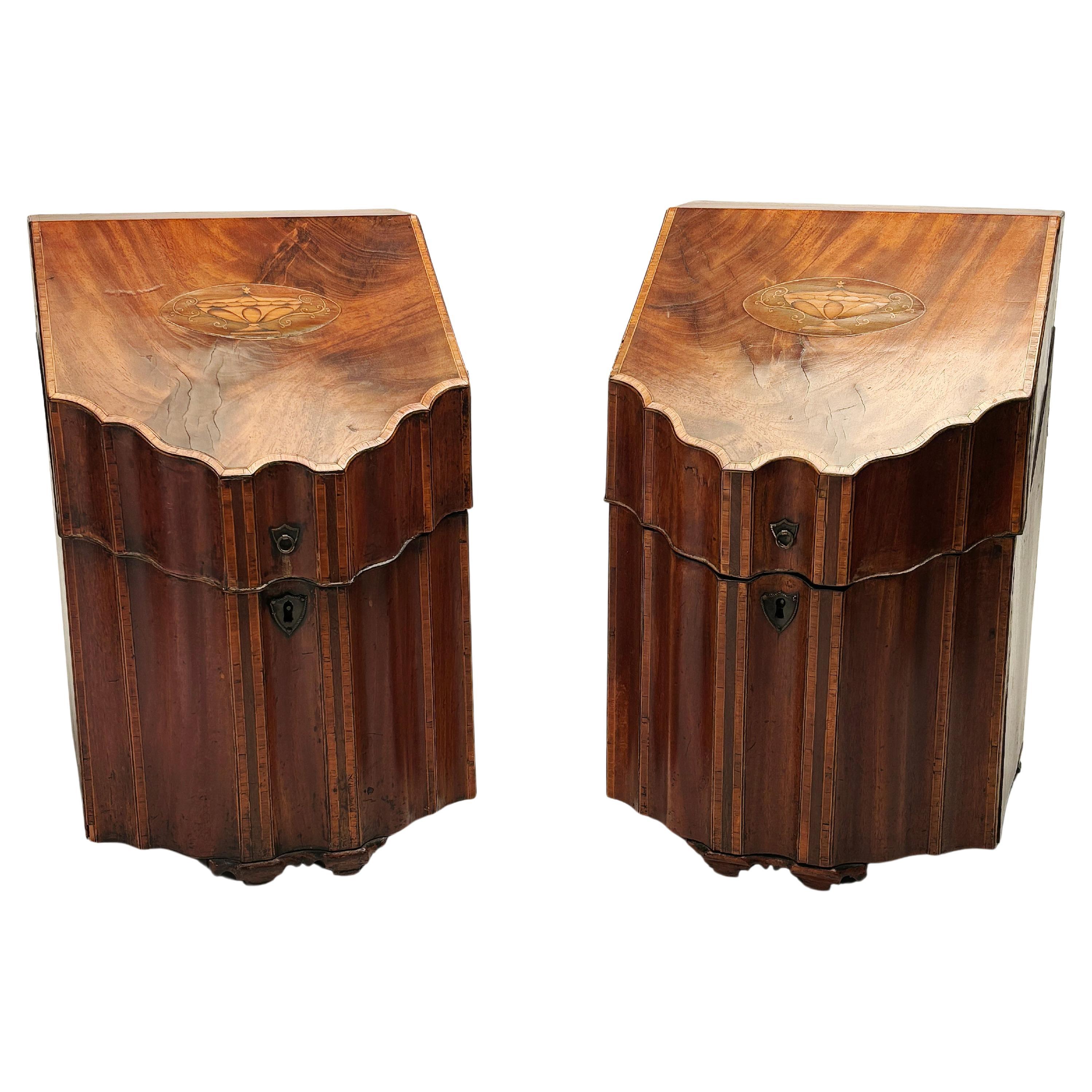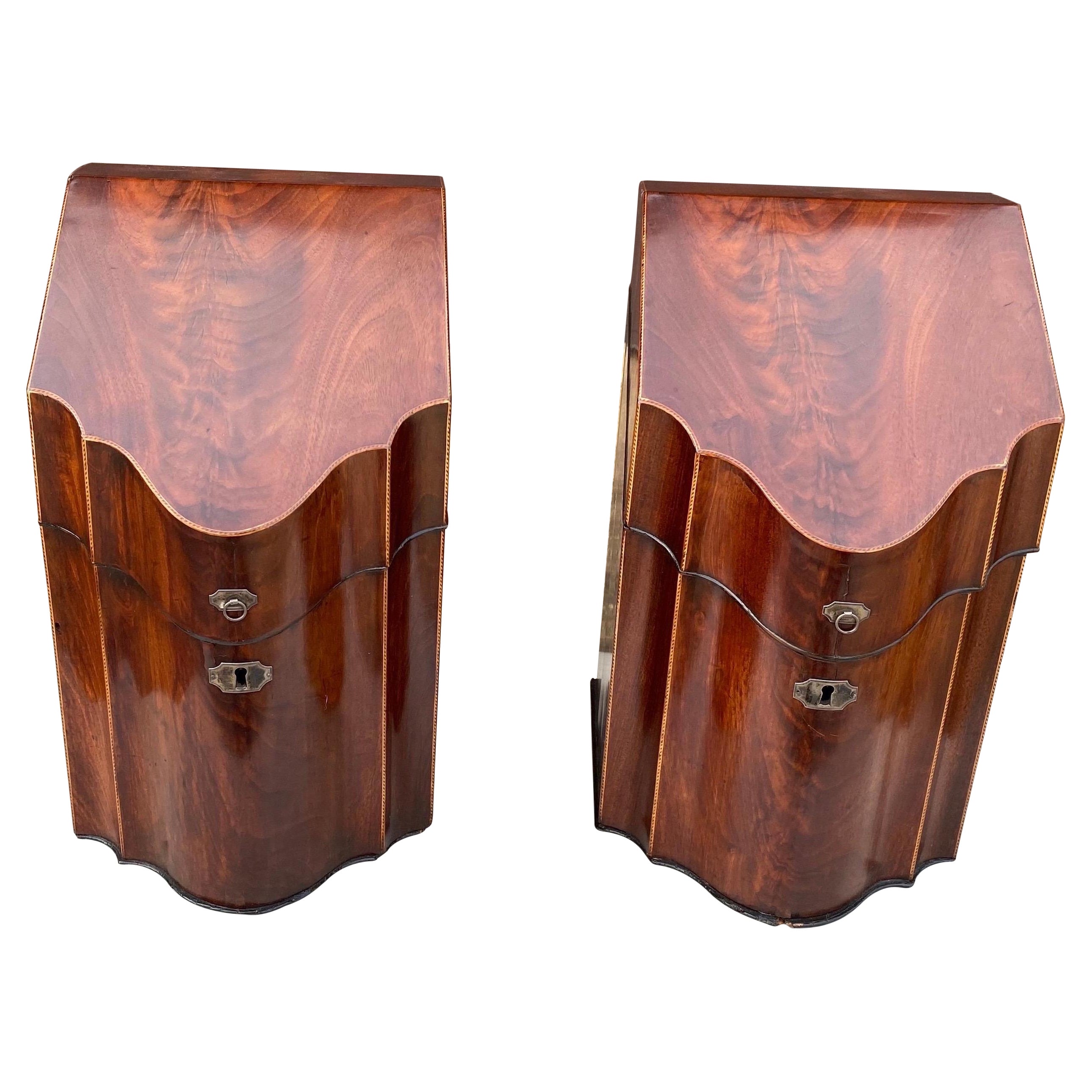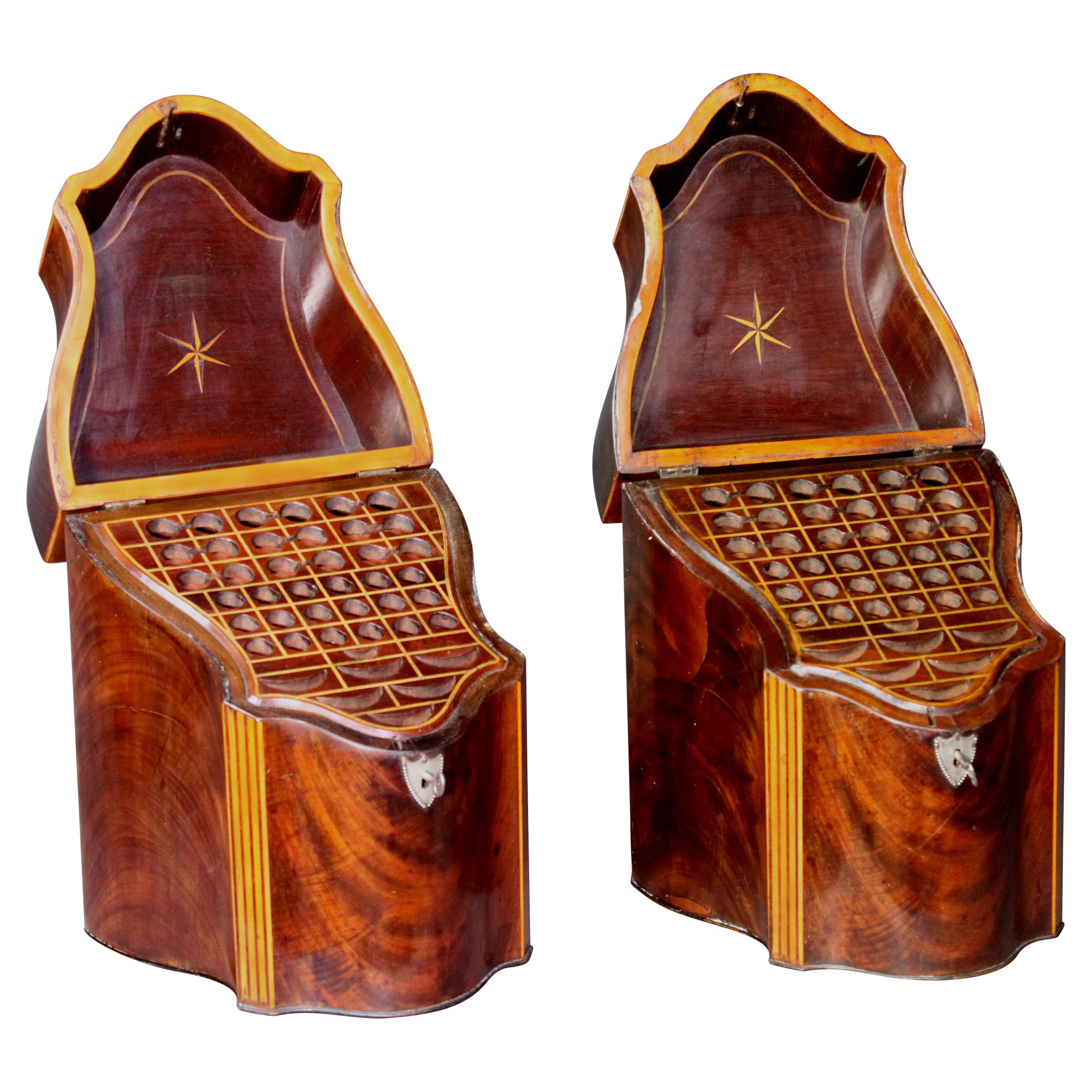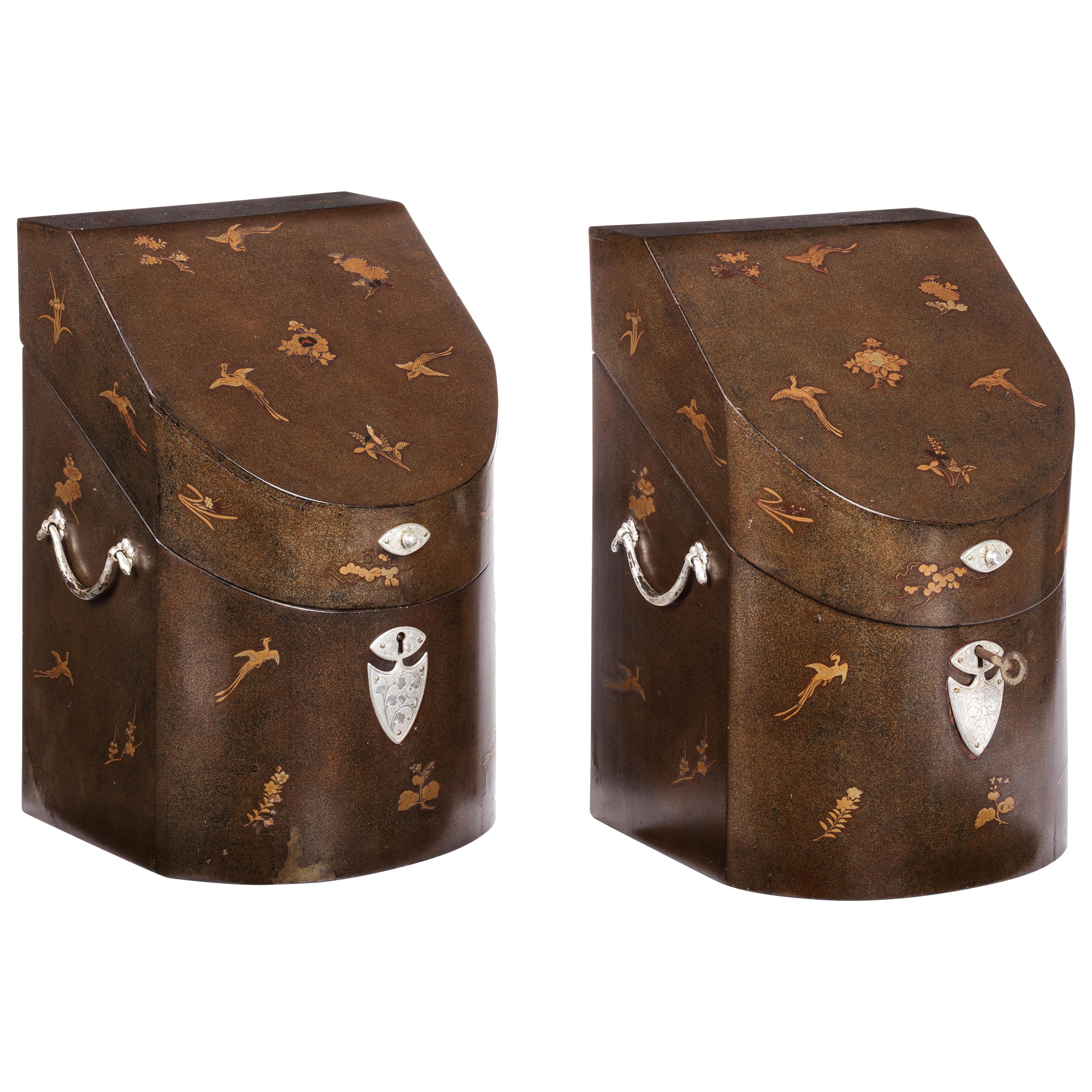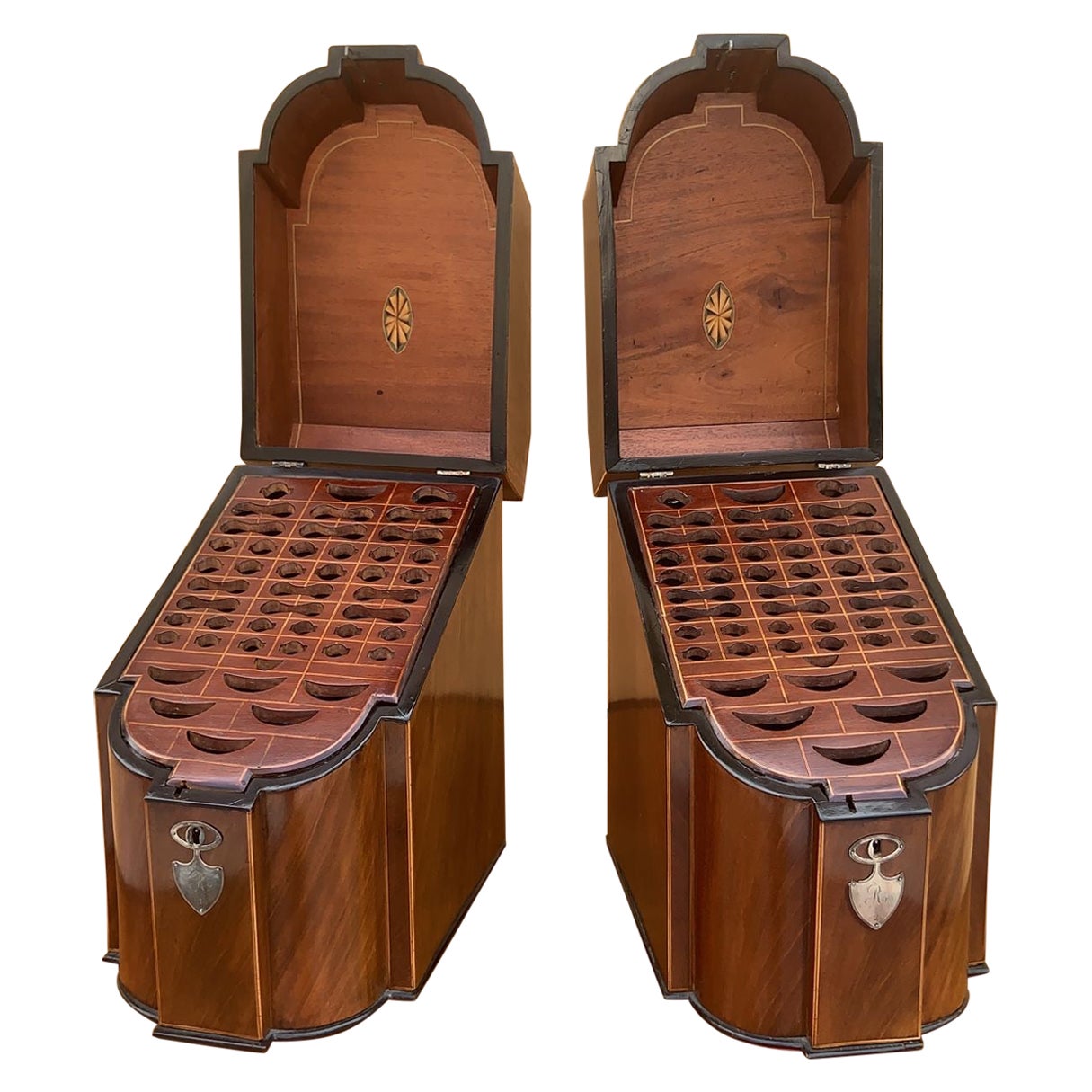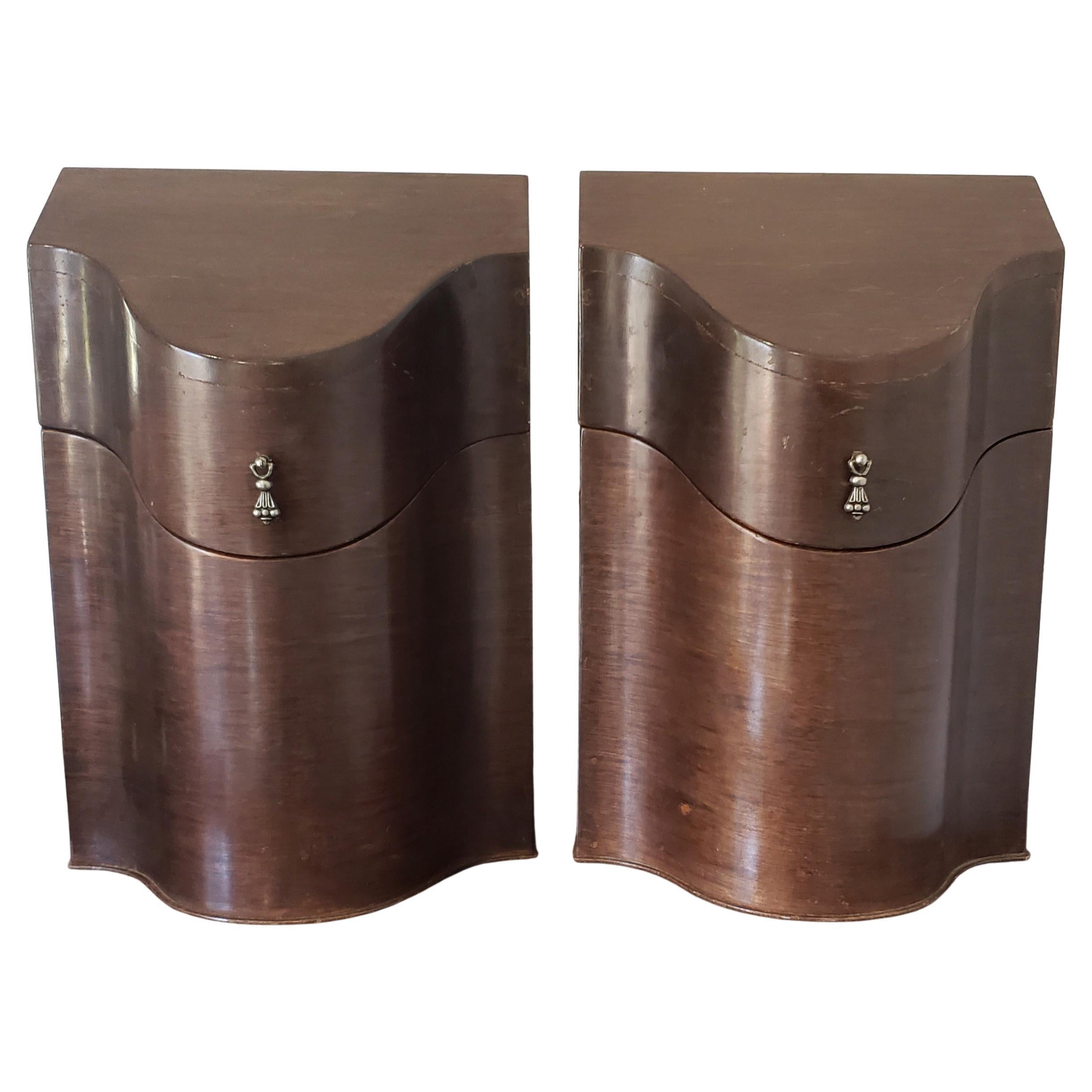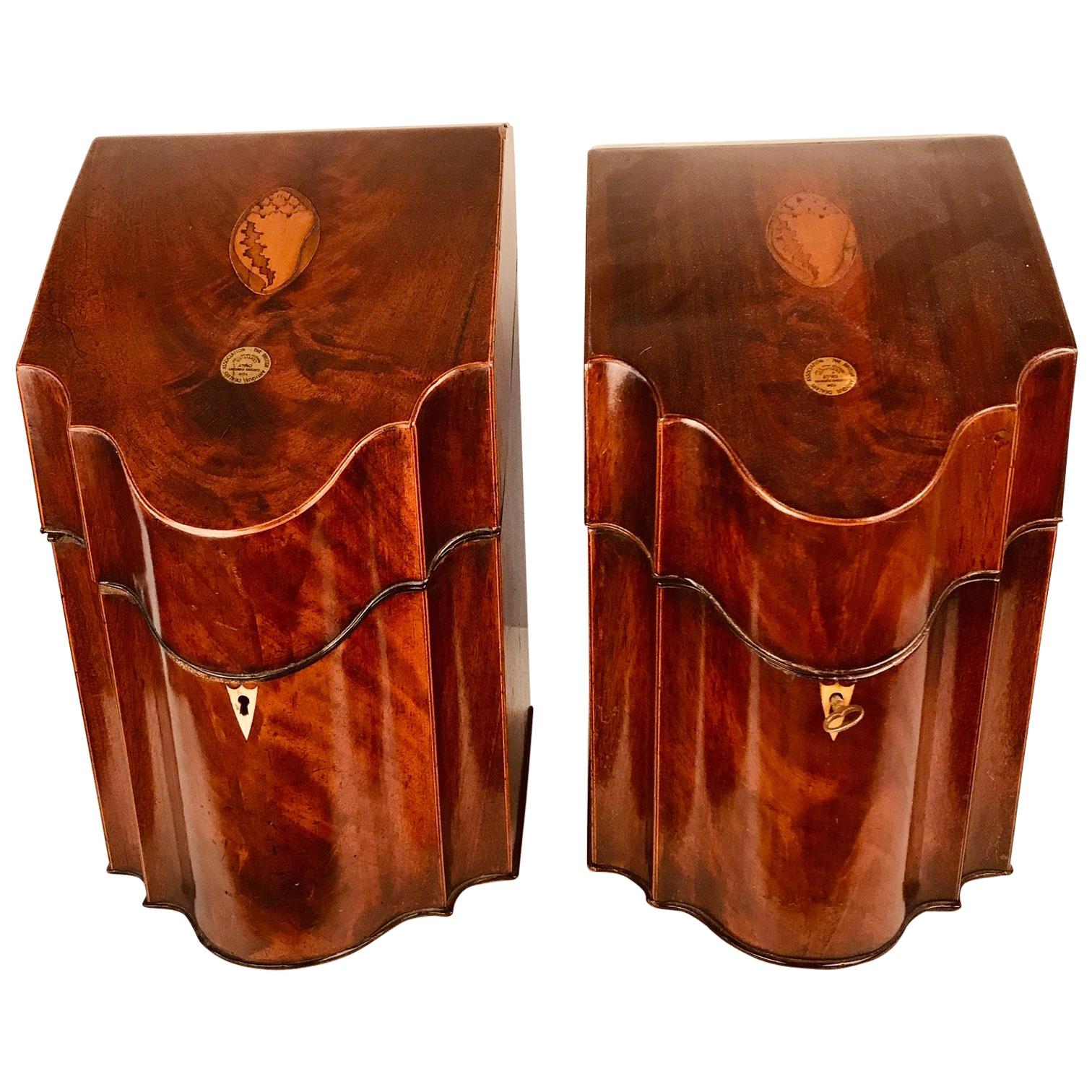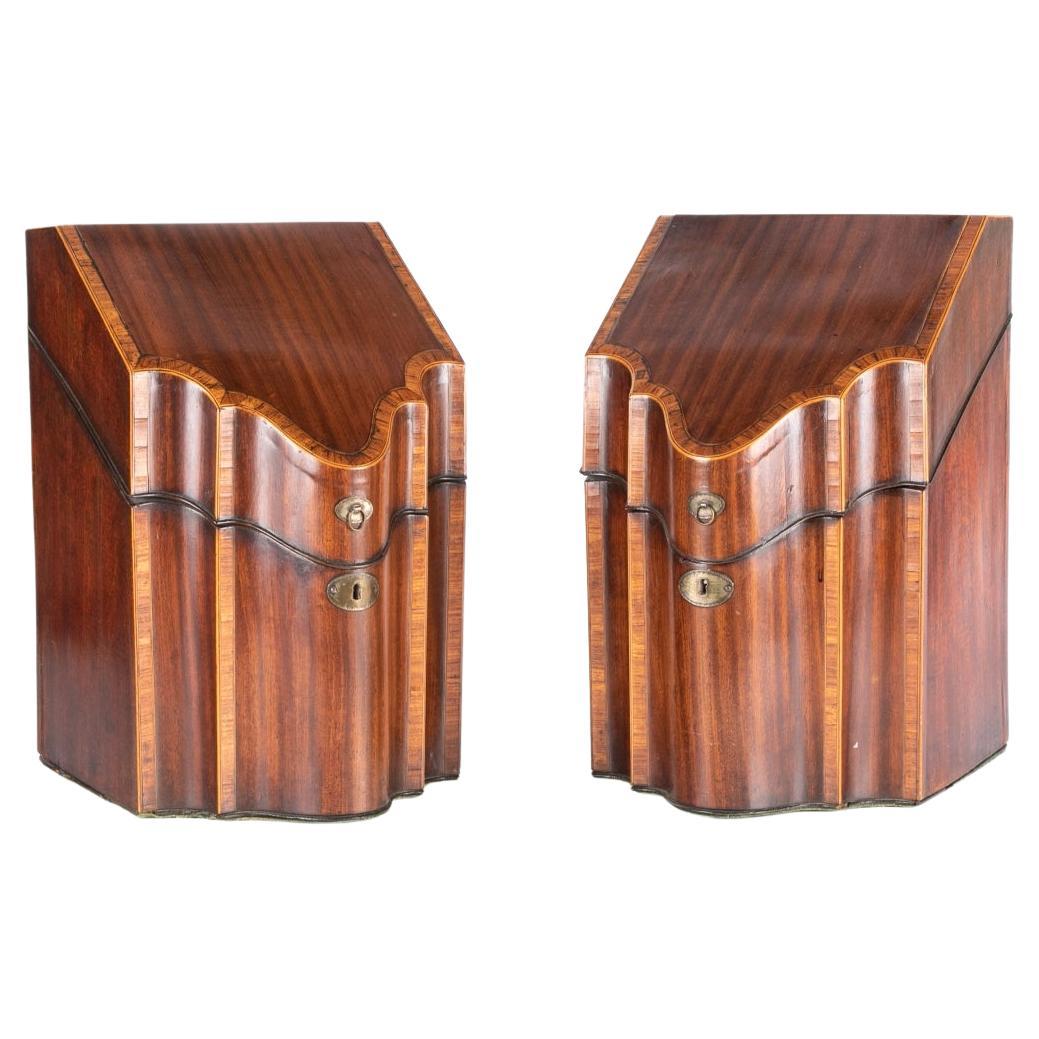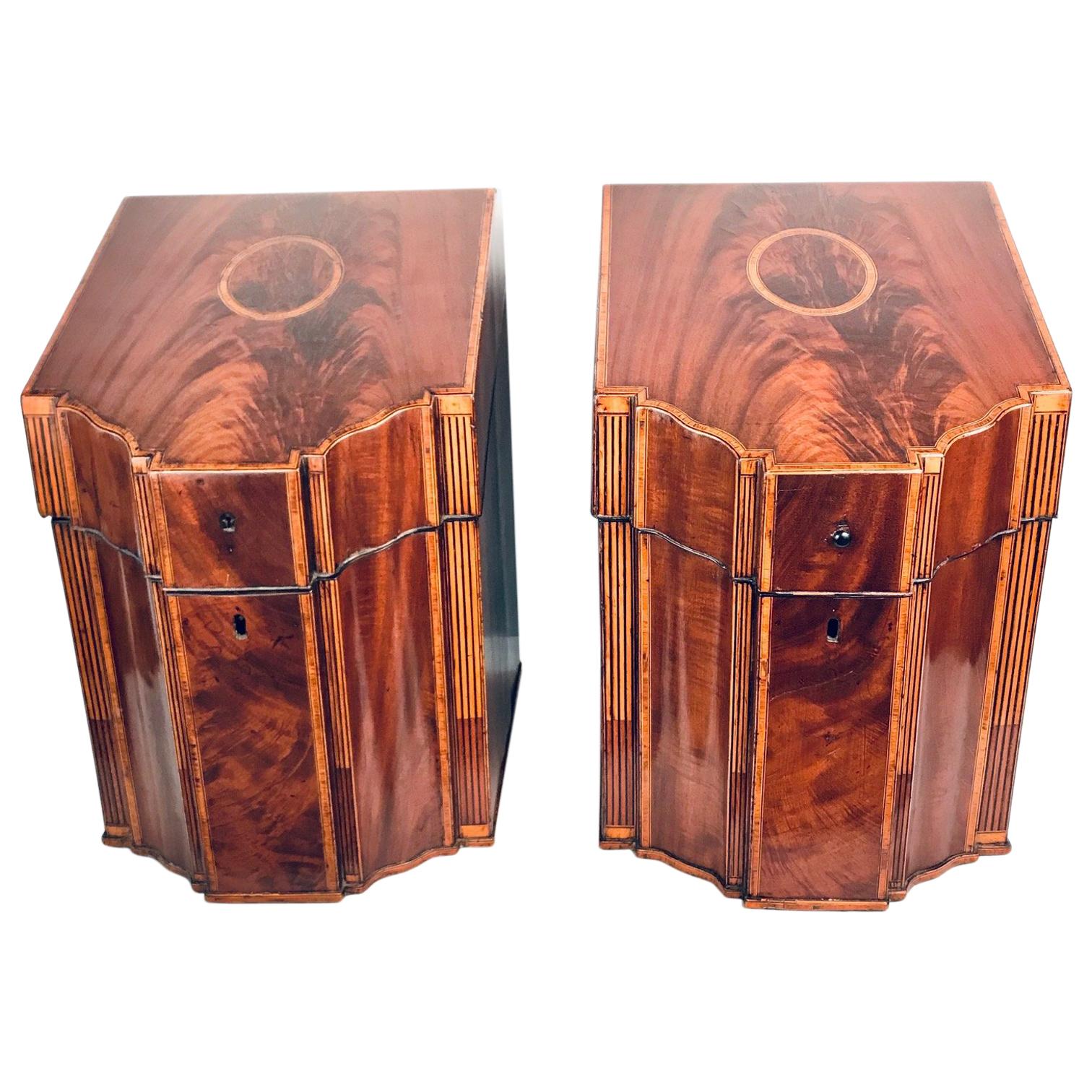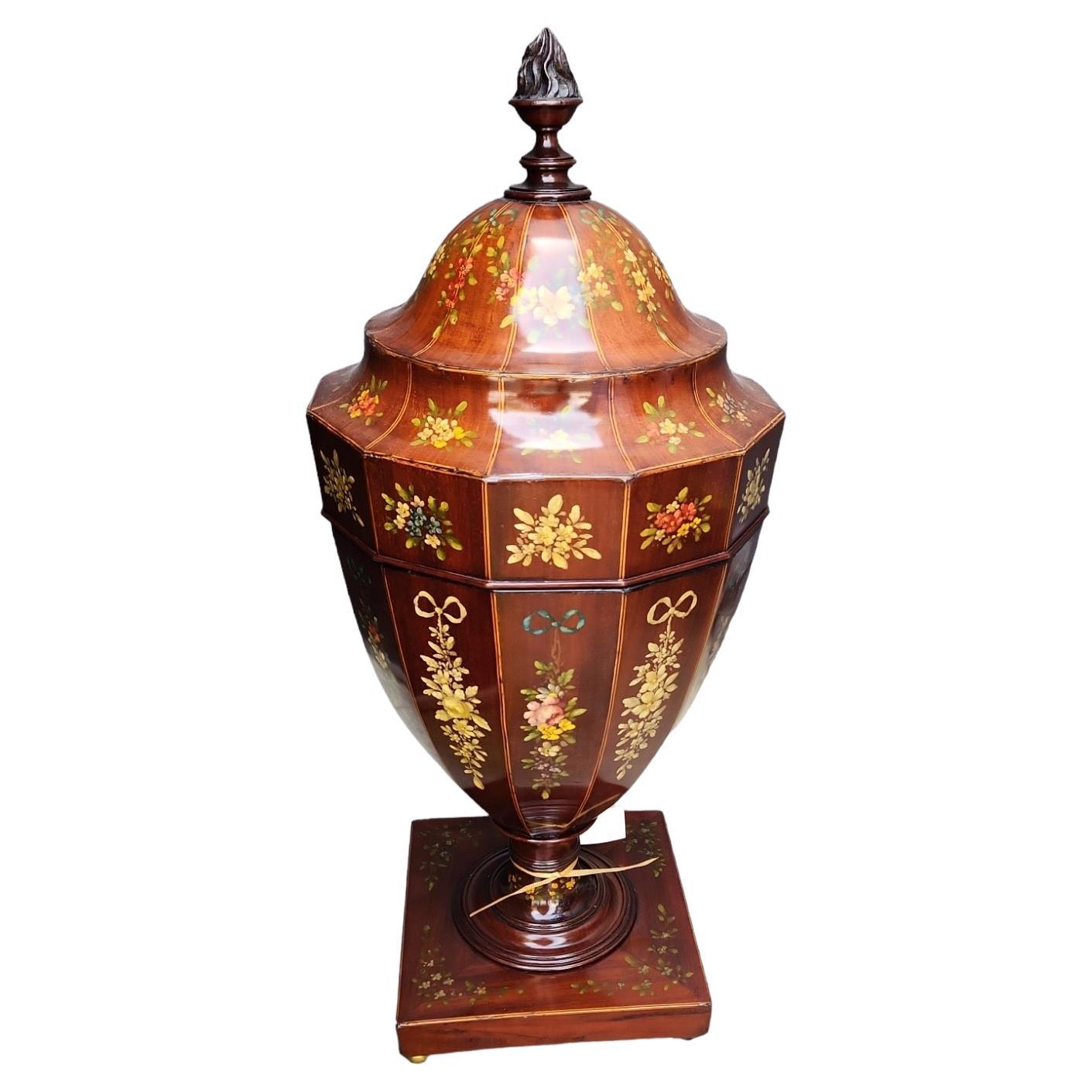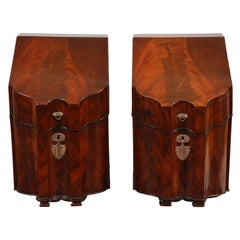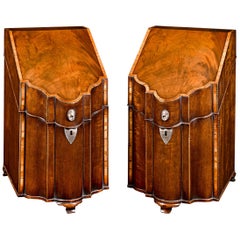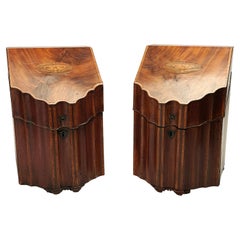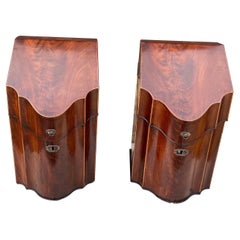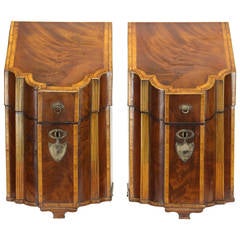
Pair of Late 18th Century English Knife Boxes
View Similar Items
1 of 10
Pair of Late 18th Century English Knife Boxes
$4,500List Price
About the Item
- Dimensions:Height: 15.5 in (39.37 cm)Width: 8.5 in (21.59 cm)Depth: 12 in (30.48 cm)
- Sold As:Set of 2
- Style:George III (Of the Period)
- Period:1790-1799
- Date of Manufacture:1790
- Condition:Wear consistent with age and use.
- Seller Location:Kilmarnock, VA
- Reference Number:1stDibs: LU88862896242
Authenticity Guarantee
In the unlikely event there’s an issue with an item’s authenticity, contact us within 1 year for a full refund. DetailsMoney-Back Guarantee
If your item is not as described, is damaged in transit, or does not arrive, contact us within 7 days for a full refund. Details24-Hour Cancellation
You have a 24-hour grace period in which to reconsider your purchase, with no questions asked.Vetted Professional Sellers
Our world-class sellers must adhere to strict standards for service and quality, maintaining the integrity of our listings.Price-Match Guarantee
If you find that a seller listed the same item for a lower price elsewhere, we’ll match it.Trusted Global Delivery
Our best-in-class carrier network provides specialized shipping options worldwide, including custom delivery.You May Also Like
Pair of 18th Century English Mahogany Knife Boxes
Located in Los Angeles, CA
Pair of 18th century English Mahogany Knife Boxes with Sterling Silver hardware and original fitted interiors.
Category
Antique 18th Century and Earlier English Knife Boxes
Materials
Mahogany
18th Century George III Mahogany Footed Knife Boxes
Located in New Orleans, LA
An exceedingly rare and important pair of George III-period mahogany knife boxes of exceptional quality and condition. The boxes are of serpentine form with refined crossbanded and c...
Category
Antique 18th Century English George III Knife Boxes
Materials
Serpentine
$18,500 / set
18th Century Georgian Knife Boxes with Intricate Inlay
Located in Louisville, KY
18th century Georgian knife box made from mahogany, flame mahogany and satinwood. Satinwood cross-grain inlay borders the top, ornate and intricately done satinwood marquetry inlay o...
Category
Antique Late 18th Century English George III Knife Boxes
Materials
Mahogany, Rosewood, Satinwood
Pair of 18th-Early 19th Century Georgian Inlaid Mahogany Knife Boxes
Located in Richmond, VA
Pair of late 18th-early 19th century Georgian inlaid mahogany knife boxes. Great color and patina. Serpentine form.
Category
Antique Early 19th Century English Georgian Knife Boxes
Materials
Mahogany
Pair of Georgian Knife Boxes
By Thomas Sheraton
Located in Bradford-on-Avon, Wiltshire
Fine pair of George III Sheraton Period figured mahogany knife boxes with striking boxwood stringing, silver plated mounts and the original fitted interiors....
Category
Antique Late 18th Century English George III Knife Boxes
Materials
Mahogany
$6,193 / set
Pair of Fine Japanese Export Lacquer Cutlery Knife Boxes, 18th Century
Located in Amsterdam, NL
A pair of fine Japanese export lacquered cutlery boxes
Kyoto or Nagasaki, late 18th century
H. 33.5 x W. 24 x D. 21 cm
The bow-fronted boxes with sloping lids flat at the top are made of hinoki wood (Cypress), coated with Japanese paper and decorated in lacquer with scattered gold birds and flowers on a nashiji background. The Japanese mounts are made of copper and both boxes still have internal partitions to keep the cutlery upright.
The form of these boxes is similar to a pictorial-style knife box in the collection of the Groninger Museum (inv. 1989- 347), dated between 1730 and 1780, but the style of the decoration is more like that on a knife box in the Peabody Essex Museum in Salem (inv. E62271), which was brought to Salem by James Devereux, Captain of the Franklin, in 1799.
Provenance:
Henriette Jeane Christine van Neukirchen, called Nyvenheim (1807- 1849) and Nicolaas Johan Steengracht van Oostcapelle (1806-1866), thence by descent to the last owners, Ludolphine Emilie baronesse Schimmelpenninck van der Oye (1944) married in 1969 to Roland Daniel van Haersma Buma (1944), the last residents of castle Duivenvoorden near Voorschoten and the great-great-granddaughter of Nicolaas Johan Steengracht van Oostcapelle.
There is no evidence that Nicolaas Johan himself, or any of his or his wife’s ancestors had ever been in Japan. However, Nicolaas’ grandfather (Nicolaas Steengracht, 1754-1840) was a director of both the VOC and WIC (West Indies Company...
Category
Antique Late 18th Century Japanese Lacquer
Materials
Silver
